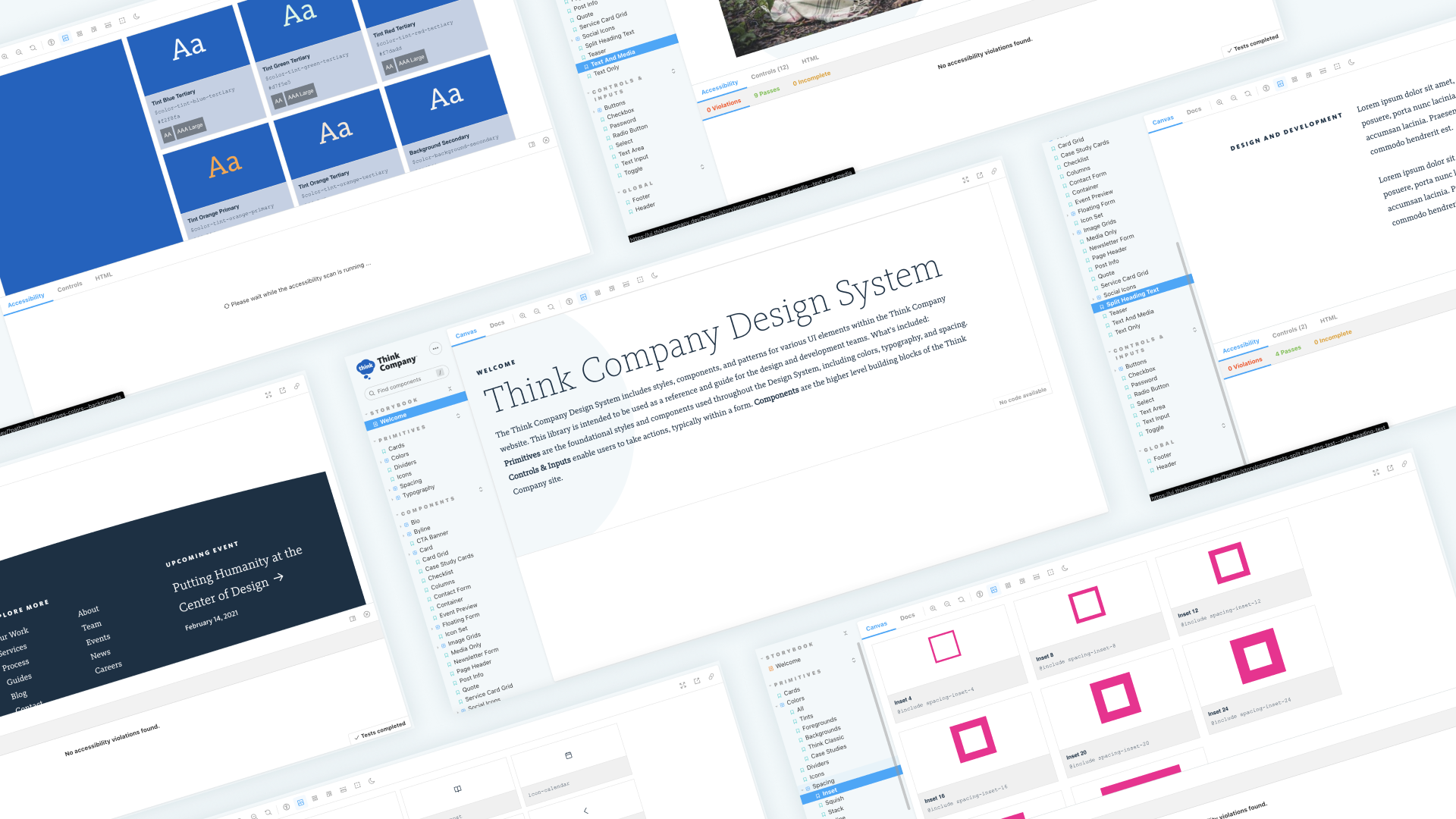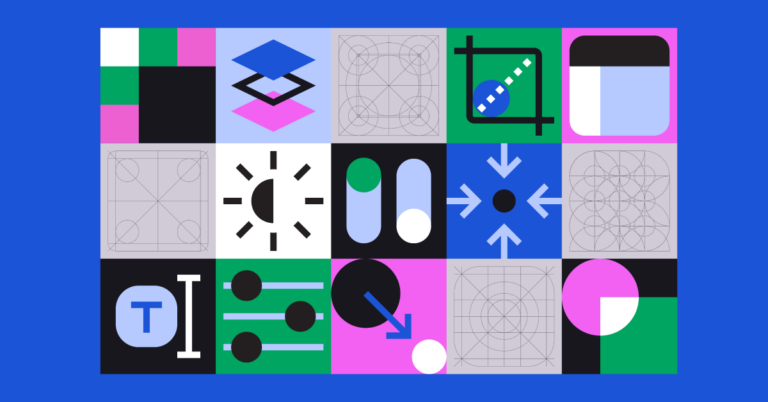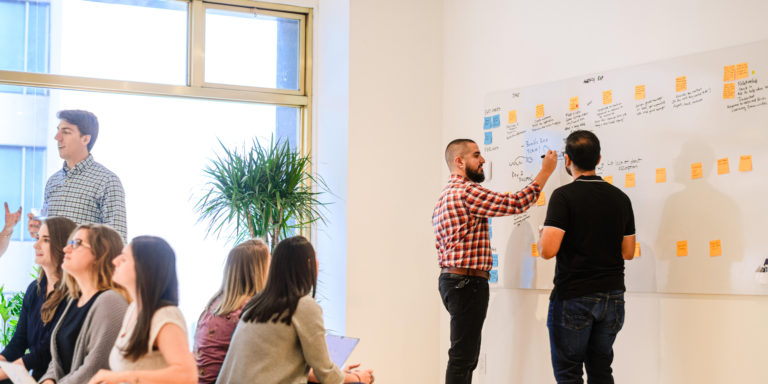Your enterprise team has a design system, but is it working?

Starting a design system is easy. Evolving a design system requires long-term planning.
As UX consultants who have worked with a number of organizations to create and maintain a design system, we’ve seen many teams grapple with the confusion of a design system not working as intended after it’s created. At enterprise organizations especially, the complexity of brands, products, and team structures makes it difficult to centralize and prioritize a long-term maintenance effort, so it’s often deprioritized. And with continued neglect, the design system eventually stops addressing the problems it was created to solve.
But we’ve also seen that it’s possible to build a maintenance and evolution strategy that’s both realistic and effective—helping your enterprise team to work better and faster than ever before. In this post, we’ll walk through the strategies you can use to maintain and evolve your design system long past its original launch date.
Signs your design system isn’t working
First, if you suspect that your design system may not be working as you and your team intended, you may be experiencing the following:
- Your team is using the design system sporadically, and some teams or departments have stopped using it altogether.
- There are now multiple sources of truth for information, and some of it is outdated.
- As your team members leave, you realize that bits of knowledge about the design system are lost forever.
- Conversely, new team members are joining and don’t adapt to the system (or, they are trying to adapt but are experiencing too much friction).
- You get useful product design feedback from users or customers of your business, but you aren’t updating components in your UI library to address the feedback.
- You’re trying to update components but are accumulating technical debt.
- Reuse, multichannel use, and personalization of content (by “content,” we mean any element that conveys meaning) is cumbersome because the design system didn’t use structured content models.
If you relate to any combination of the above, don’t fret! You can still put a number of strategies in place to help your team maintain the system they worked so hard to build.
Best practices for design system maintenance and evolution
Just as your products and services need to be nurtured and improved upon, your design system should be too. Treat your design system like a product. From a dedicated design system team to a maintenance and evolution strategy. Below are best practices to ensure your design system is getting the attention it deserves.
Don’t assume that you can “set it and forget it”
This is by far the most common pitfall we’ve experienced after working with a partner to set up a new design system. Reaching that goal feels like a huge accomplishment, but teams assume they won’t need to put much work into the maintenance of the system beyond that milestone.
The reality is that you will need to plan for design system maintenance the same way you would any long-term project. This includes updates to the kit itself as well as:
- A long-term update strategy – This strategy should include a roadmap and backlog of activities. You should schedule even small activities and plan a cadence for updates in whatever way makes sense for your business. One of our enterprise clients plans for quarterly updates, and they invite stakeholders to kit maintenance meetings to help them fully comprehend the planning and resources required to keep the kit updated.
- Dedicated people – Ideally, you’ll have a team with people across roles and departments to keep the strategy prioritized and moving forward. This should involve content strategists who have built structured (semantic) content models to include intent as well as presentation. It is also ideal to collaborate closely with developers and content management folks who will build and use the system, for example, in a content management system, or CMS.
- A plan to keep tools within the system updated and fluid – This doesn’t have to be too structured—when it comes to incorporating tools, analysis paralysis will only slow you down.
- A communication strategy – This strategy should be focused on sharing updates with everyone who touches the system, and should include a change log that people can review passively to understand how the system has evolved and why.
- A plan to continue to evangelize the system – This will keep everyone invested and bought into the long-term benefits of the system.
Throughout this process, it’s essential to keep planning realistic for everyone—yourself and the team. If you’re not setting realistic expectations, the team could experience frustration and lose sense of the system’s value.
Do your (internal) research
Ideally at this stage, you’ll have already done thorough research to make sure your design system is serving the needs of the people using it. But keeping an open, internal feedback loop is key to making sure the system is actually useful to people long term. This doesn’t need to be a formal process—you can gather feedback and perspectives informally during the course of maintenance.
You can focus on core questions—like what might be stopping people from using the system and whether there are access or tooling issues—but you should also focus on how much variation is needed across departments and roles. If your system serves people working across many products and brands, get clear on what specific components they need. Collaborate with multiple teams to ensure your design system is useful for and takes into account the work of designers, developers, and content strategists; marketing and product design; etc.
This is particularly important if your content is omnichannel or will be omnichannel in the future (e.g., delivery of content on voice assistants, different apps). A system built only with components may not be enough, and you will need to harmonize your system with structured content.
This sounds time consuming, but it will save you time later. You must ask people what they need and want from a design system, and collaborate with others in order to make it succeed.
Communicate, document, and close feedback loops
Much like consistent research, ongoing communication is essential for keeping people engaged and keeping the design system useful. Without it, the system will fall apart quickly. And because a design system is bigger than one person, you’ll need to work across multiple teams to plan for clear, consistent communication with everyone involved.
A good communication plan involves the following:
- Make sure you have a strong, helpful storefront as a home base for sharing information. (To figure out whether it’s a strong storefront, get feedback!)
- Keep relevant people, departments, products, and brands informed about the feedback you’re integrating—and the actions you’ve taken as a result.
- Host informal events to keep people engaged and updated on what’s in progress.
- Build knowledge continuity through documentation. Product design teams change a lot, and knowledge is often lost when people leave. So, it’s important to record kit and UI library updates, decision points, important milestones, process steps, and more.
As a leader, make sure you’re communicating, too. Ask yourself: If you left today, would the system live on? If not, document and share what you know.
Plan for continuous onboarding
You might have organized an official onboarding plan once your initial kit was set up, but you should get into the habit of thinking about onboarding as a continuous activity that’s never completed.
Is your design system working for you?
Our design system experts can help.
Regular turnover is a given on any team. New employees and contractors who join will need time (and support!) to learn the kit as well as tools like Sketch, Invision, Figma, Storybook, and others—especially if they’re used to using other tools and see the entire adoption process as a chore. Long-time members of the team will also need to refresh their knowledge and ask more detailed questions about the kit.
One way you can think about planning for onboarding is by providing a mix of formats:
- Scheduled workshops – Though it can be tough to cover all of the onboarding information in a single workshop session and to get everyone in the same room, workshops are a great first step towards setting a reliable, predictable onboarding cadence. You’ll quickly see that it’s a valuable touchpoint to discuss questions and pain points of using the system.
- Written documentation – Wading through tons of written documentation and information (and keeping it consistently updated) can be a challenge. But, written documentation is an extremely helpful resource for people who want to catch up or get information on their own time.
- Video tutorials – Video can be time consuming to produce, but it’s an excellent alternative to in-person workshops for folks who have extra busy calendars or who need to understand how to complete a very specific task.
The key to providing a strong, consistent onboarding program is to produce a mix of materials that your team can layer together for the right needs.
Keep all contributors in sync and working on components at the same pace
One of the keys to making the system work long term is to keep an eye on your core functions—design, development, and content strategy, among others—and whether they’re working on components in the system at the same pace.
Design and development
If your design team creates a new component for the UI library but doesn’t talk to development until late in the process, for example, you’ll often have a large amount of rework to tackle. You should scope work out properly and make sure you’re communicating. Design and development gaps not only slow your team down, but they create tech debt. (Documentation is also important for keeping design and development teams in sync; they can’t work harmoniously without shared knowledge.)
Content
It’s essential to collaborate with content folks—especially as you’re building key components of the design system. If you have modular content, you want to take collaboration with content strategists into consideration when you create the system, but also as you evolve it. This will help make the content entry process easier and improve structured content for search and other machine-readable applications.
If content strategists weren’t involved in the system’s setup, you can still retroactively build that consideration into your existing kit and future planning. It can be challenging, but you can build structured content into the fundamentals of the design system over time—especially if you are migrating content to a new (hopefully headless) CMS or performing a redesign or refresh.
In general, it’s essential to bring content strategists into ongoing planning and conversations along with other roles on the team.
Signs your enterprise design system is working
When implementing the above considerations into your system maintenance, you should eventually see evidence that your system is working as intended:
- It’s easily accessible and used as a source of truth, especially after a long period of time.
- You’re receiving positive feedback about the system from various teams (design, development, content, marketing, product, etc.).
- Kit maintenance and updates are under control and accomplished in a progressive, timely manner.
- The design system works with content models, and content strategists are giving input to components on a regular basis.
- Multiple contributors from your product design and development team are invested in and contributing to the maintenance of the design system.
- Components are coupled with content models and structured content to take into account intent as well as presentation.
Work on your design system will never be finished, but the effort is worth it
It’s tempting to adopt a “set it and forget it” mindset after completing the foundation of your design system—especially for enterprise teams who go through a considerable amount of work to establish the system in the first place. But regular maintenance will help make sure all of the work you put into setting up your system doesn’t go to waste. Communication, documentation, and teamwork are well worth the time—and will enable your team to create something even greater in the future.
A special thanks to Regina Lam, Principal Content Strategist, for contributing.



